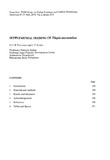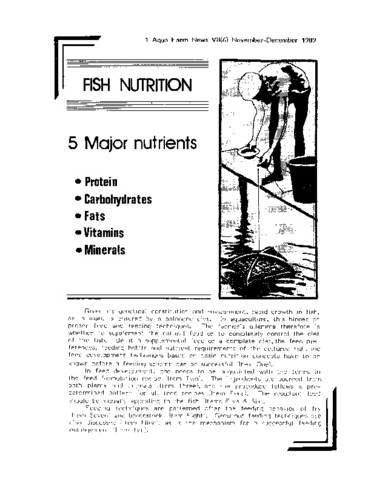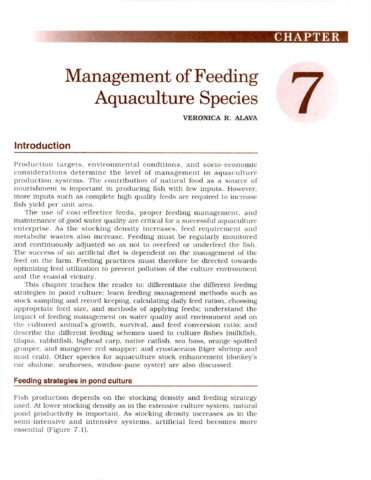Supplemental feeding of Tilapia mossambica
Share
Abstract
T. mossambica were grown to marketable size in floating cages in Laguna de Bay at a stocking density of 75/m2. Those given supplemental feed 1 (rice bran:ipil-ipil:fish meal, 60:20:20) showed significantly faster growth than those fed with supplemental feed 2 (chopped snails:rice bran, 30:70). Controls, without supplemental feeding, showed slower growth rates as compared to the supplement-fed lots. A more efficient feed conversion ratio was obtained for feed 1 (4:1) as compared to feed 2 (6:1).
Laboratory experiments in aquaria showed the feasibility of improving the growth of tilapia with ipil-ipil (Leucaena leucocephala) leaf meal alone. Varying levels of ipil-ipil, given at 3, 6, and 9% of the body weight, increased the body weight to 0.75 g, 1.68 g, and 2.94 g, respectively. Moreover, the crude protein content of tilapia increased proportionately with increasing levels of ipil-ipil leaf meal.
The significance of the above results in the light of establishing a tilapia lake farming industry and its effect on the improved nutrition of the people were discussed.
Suggested Citation
Pantastico, J. B., & Baldia, J. P. (1979). Supplemental feeding of Tilapia mossambica. In J. E. Halver & K. Tiews (Eds.), Proceedings of a World Symposium on Finfish Nutrition and Fishfeed Technology, Hamburg 20-23 June, 1978 (Vol. I, pp. 587–593). Berlin: Heenemann Verlagsgesellschaft.
Subject
Collections
Related items
Showing items related by title, author, creator and subject.
-
Nursery culture of mud crab, Scylla serrata, using different ratios of natural food to formulated feed
Alava, Veronica R.; Sumile, Jony D.; Parado-Estepa, Fe D. (Aquaculture Department, Southeast Asian Fisheries Development Center, 2017)The effect of feeding different ratios of natural food to formulated feed on the production and profitability of Phases 1 and 2 of nursery culture (3 weeks per phase) of hatchery-produced crab Scylla serrata was investigated. ... -
Fish nutrition
Carreon-Lagoc, Julia; Southeast Asian Fisheries Development Center, Aquaculture Department (Aquaculture Department, Southeast Asian Fisheries Development Center, 1989) -
Management of feeding aquaculture species
Alava, Veronica R. (Aquaculture Department, Southeast Asian Fisheries Development Center, 2002)This chapter teaches the reader to: differentiate the different feeding strategies in pond culture; learn feeding management methods such as stock sampling and record keeping, calculating daily feed ration, choosing ...





